The amazing unfinished & abandoned 1,000-ton Egyptian Obelisk
The greatest famous Egyptian obelisk is the “unfinished obelisk” that is found exactly where it was once semi-carved from the solid bedrock.
The block was intended as an obelisk with a height of 120 ft / 36 mt. It is estimated that a block of granite this size would easily weigh more than a 1000 tons, some geologists have suggested a figure in the region of 1100 tons – 1150 tons.
This obelisk has, however, never been completed because during the process to remove the block of stone from its mother bedrock, a huge crack appeared that made the stone unusable.
The stone had no residual value apart from its planned use, to the stonemasons of that day, and this resulted in the stone being totally abandoned (perhaps under the reign of Queen Hatshepsut-18th Dynasty). Now take a minute to think of how many man-hours were wasted in getting the unfinished obelisk to the state at which it was abandoned.
It is dumbfounding to think that the main tools used to shape this excessively huge granite block were not chisels as most people would assume.
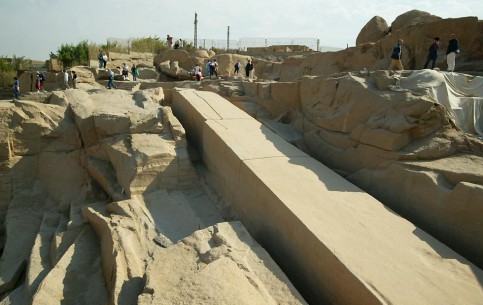
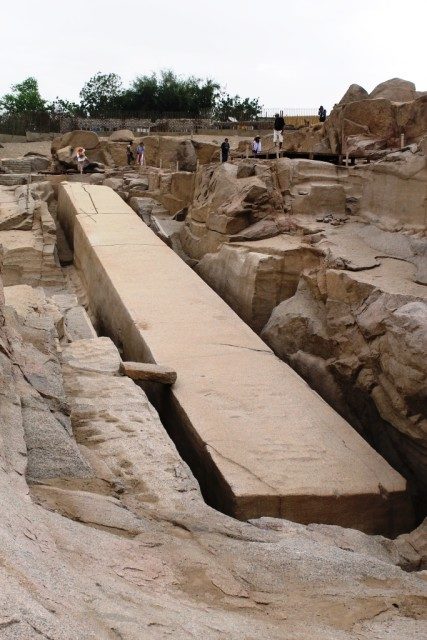
The early Egyptian stonemasons used small hand-sized balls of the mineral Dolerite to pound against the surfaces of the roughly hewn obelisks until all the superfluous knobs and excrescences were flattened. Dolerite is one of the few substances on Planet Earth that is harder than granite, most other rocks would simply crumble if they were repeatedly banged against granite.
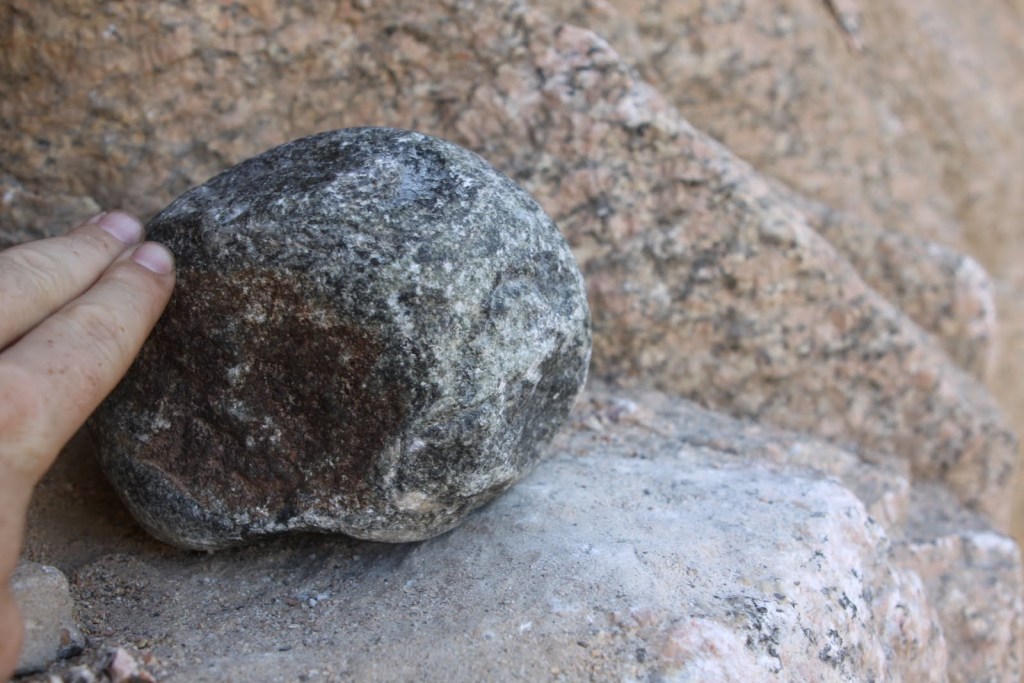
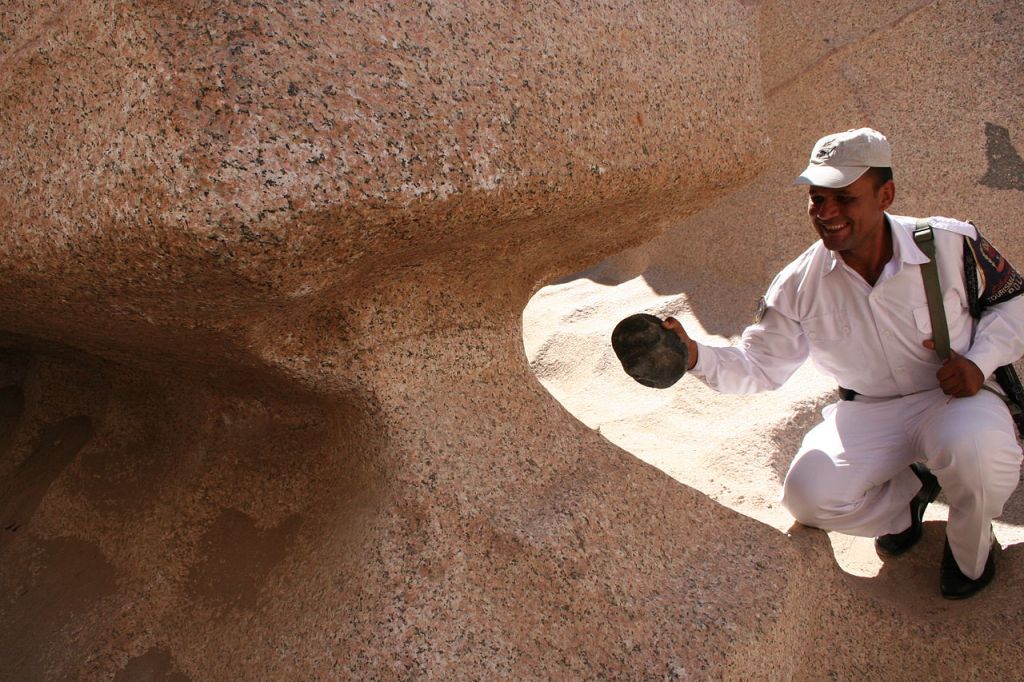
It has always puzzled me why the Egyptians chose to carve building blocks & statues from Granite when there were much softer and easier stones to work with? …and if you are thinking that it might be because the granite was locally sourced, stop! …the granite blocks used in & on the great pyramid of Giza were transported approx.
500 miles from quarry to the building site, Aswan to Cairo, so this would suggest that distance wasn’t a factor and that the stonemasons chose to work with granite, possibly for its durability or maybe simply because of its colour?
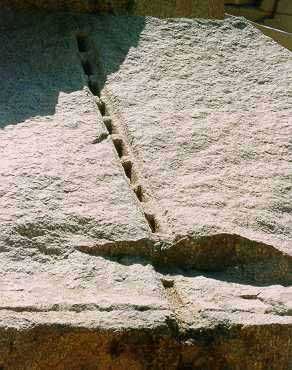
When planning the creation of an obelisk the quarry men would look for a suitable length of bedrock that had no visible flaws or cracks. Then they would make a series of small holes with probably copper tools in a line at regular intervals, similar to a row of hyphens (- – – – – -). Next they would hammer sun-dried wooden wedges into these holes.
These wooden wedges were then repeatedly soaked with water and would gradually expand over time, and yes, believe it or not, the power generated by wet wood expanding is strong enough to break a granite block free from a granite bedrock, a process which I find absolutely amazing.
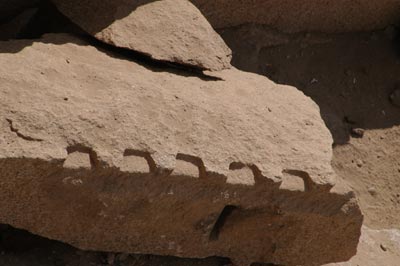
How did our early ancestors discover such a method? It is interesting to note that the same technique for separating a block of stone from its mother bedrock appears to have been used by many cultures across the ancient world. Nobody ever devised a better method or technique.
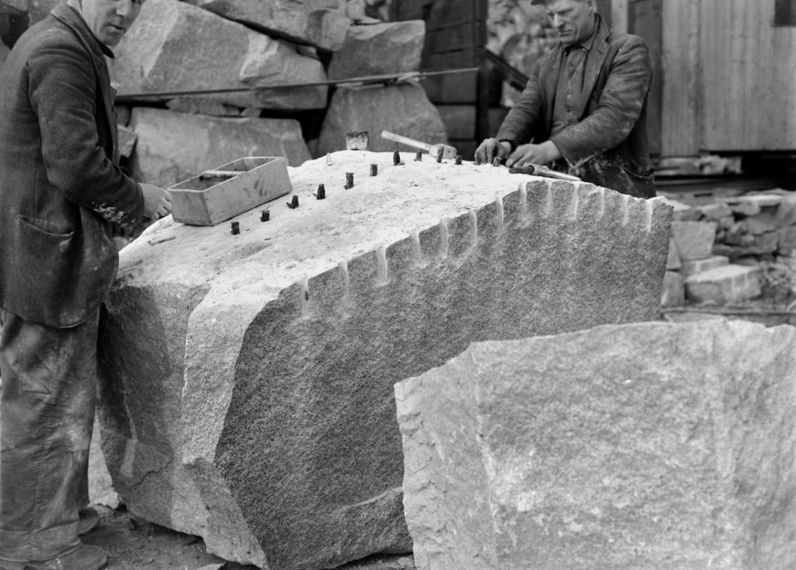
Even today modern-day quarries use a very similar method involving making a line of holes in the rock, and instead of ramming wet wooden wedges into the holes which takes quite a long time to achieve the desired effect of splitting the rock face, modern quarrymen simply hammer metal wedges into the holes which achieves the same result, except much quicker. In larger quarries whole rock faces are loosened by putting sticks of dynamite into a sequence of drilled holes, which are then detonated by a remote-controlled device.
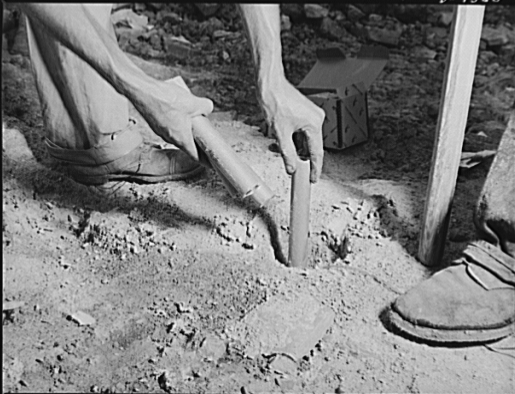
When the block of rock was finally freed from the bedrock and seen to be in one sturdy piece, the surfaces of the obelisks were leveled by repeatedly pounding them with hand-sized Dolerite stones as described above.
Finally the scribes and hieroglyphic artists would decorate all four faces with the religious beliefs and monarchial achievements of the day. There is no denying that Egypt was one of the most powerful empires ever to exist in human history and its monumental architectural achievements are testimony to that fact, but every old dog has its day and eventually has to give way to a younger stronger puppy, and the mighty civilization of ancient Egypt was not immune to the laws that govern the universe we live in, it too was eventually conquered by foreign visitors/armies.
Everybody knows that tourists can’t resist a souvenir of their travels, and unfortunately most conquerors are just big egotistic tourists at heart. The conquering nation usually takes a memento from the conquered nation to commemorate the victory, something to show the folks back home.
Over the centuries many nations have conquered Egypt, and many nations have been guilty of plundering souvenirs from the sands of this mesmerizing country, but some nations have taken utter liberties.
In various cities around the world, Istanbul, Rome, London, Paris & New York, you can find what at first sight appear to be replica Egyptian obelisks, but upon closer inspection, you will see that these obelisks are not replicas, they are actually authentic Egyptian obelisks, re-erected many miles from their original installation points in Egypt.
So far, only 28 giant Egyptian obelisks have ever been discovered, both erect & fallen. Of these 28 monolithic statements of ancient Egyptian achievement & ability, only 8 remain in Egypt.





